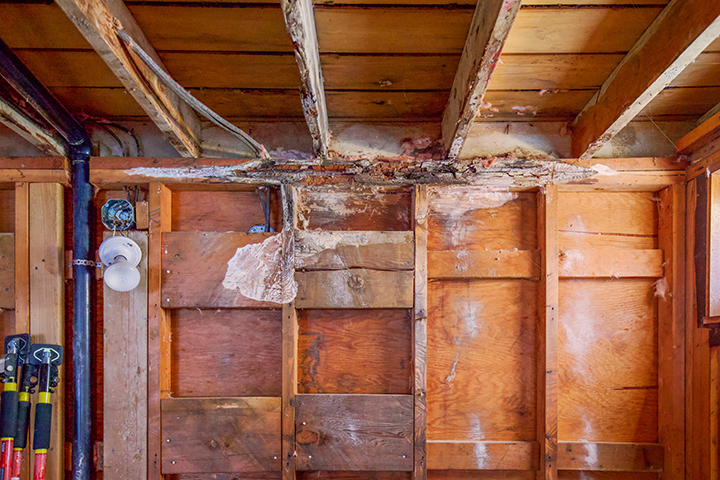
Wood Rot
Pestgon FactSheet
Wood Rot: (Dry Rot - Poria incrassata and Serpula incrassata)
Description:
Given the right set of circumstances, wood rots can digest the cellulose in a wood structure faster that a horde of termites. Dry rot can be the most devastating organism a building may ever face. It is necessary for the wood to reach a relative moisture content of 20% for rot to take hold. Once established, it can spread without any source of moisture because of its ability to draw moisture from the environment and generate moisture through the digestion of timber. Once dry rot spreads, it can severely damage the structural integrity of the building. Environmental conditions are the primary reason wood rots can get established. Leaks from plumbing or moisture barrier failure are the chief causes of rots beginning their cycle of damage.

Biology:
Rots begin as spores that are ever present in the natural environment of our earth. Once they land on wood that has a high moisture content, the spores begin to grow as hyphae. These fine white tendrils infiltrate the timber, breaking it down. These cobweb strands act as tubes extracting and transporting moisture, like roots, from the timber. As these hyphae grow, they combine together and become mycelium. Mycelium then start to spread in search of new timber. When the fungus reaches the final stage, it fruits in a mushroom-like body. The centre of this body produces new spores that will become airborne and allow for the continued spread of the fungus.
Economic Impact:
If left unattended, the economic damage from wood rots can be extreme, especially were the humidity and temperature are high. Once wood rots are present in a wood member, replacement is the best option. In many cases wood rot mycelium can extend several feet past the obvious damage in search for water. If repairs are limited to the damage, rots can still return if not properly treated with antifungal preparations.
Management Methods:
Environmental conditions are the first indicator of where to start managing wood rot issues. Often the failure of moisture barriers, either on the roof or in sub areas are the first cause of rot conducive conditions. Plumbing leaks and standing water in sub areas are additional conditions that merit intervention. One of the best preventatives for the formation of wood rot issues is the application of a borate based topical solution applied to all surfaces of a wood member. The natural capillary action of wood will draw certain formulations toward the interior of the wood member. Over time the presence of borate ( a naturally occurring fungicide and termiticide) will make the wood highly resistant to the formation of wood rot.
